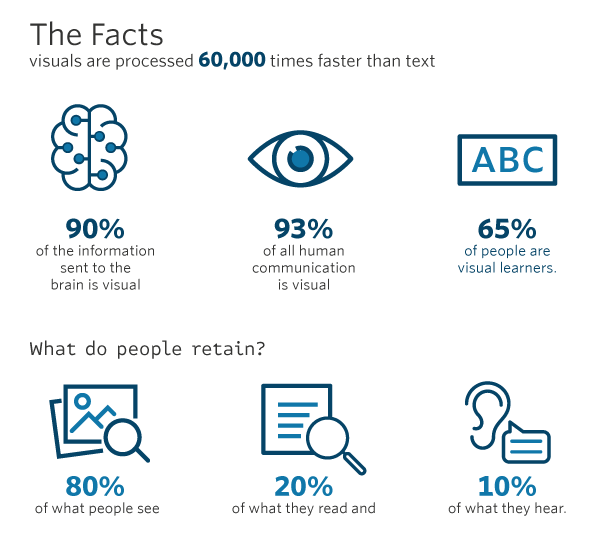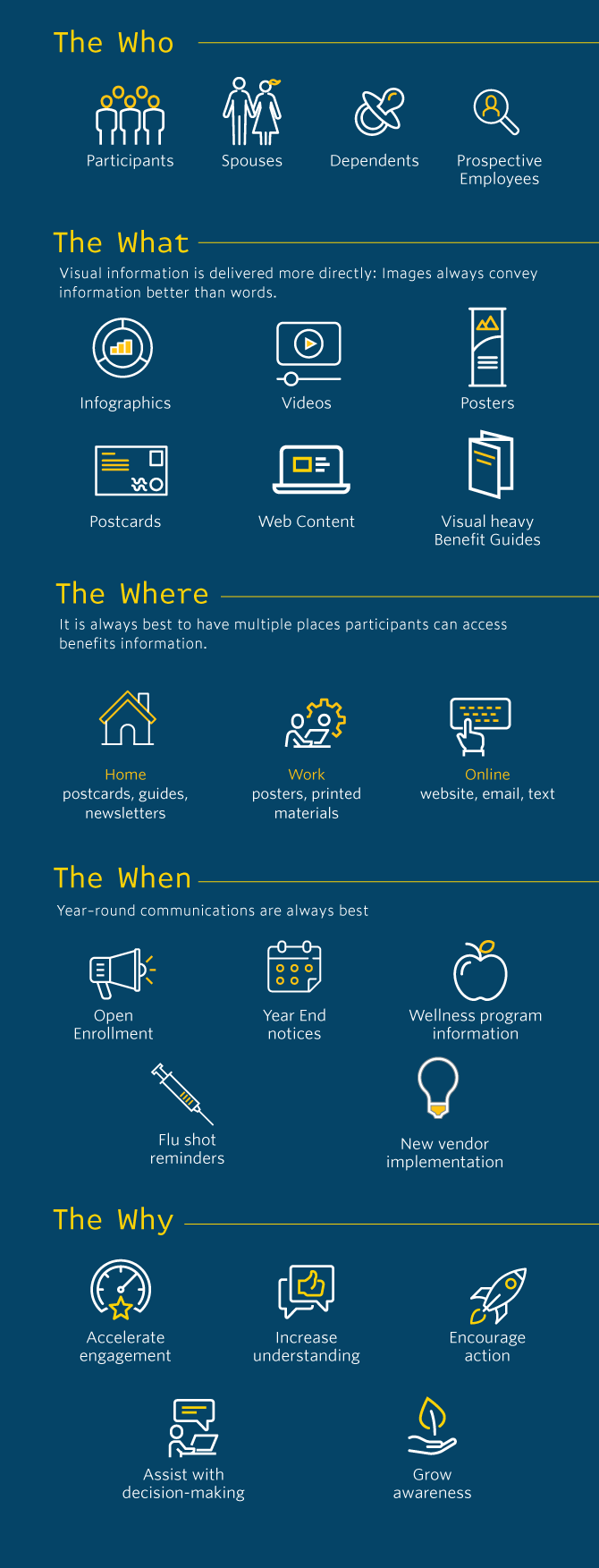
Highly visual communications improve the potential for benefits engagement
How many times have you heard someone say, “Don’t judge a book by its cover”? And despite that admonition, how often have you picked up a book, looked at the cover, and thought to yourself, “Looks boring. Must not be that interesting”? If we’re being honest here, this has probably happened to most of us—and more than once.
It’s no secret that adult attention spans are dwindling (we have technology to thank for that).1 Ever alert, marketers are attuned to the need for visuals to keep people engaged. Photos, icons, infographics, memes, charts, graphics, and more—they all help to attract and, more importantly, hold people’s attention. Research backs that up. According to the Social Science Research Network, 65% of us are visual learners. The takeaway? If you want someone to pay attention to the information you’re providing, looks matter.
[Here’s how the previous sentence might look, were we using visuals:]

Sources: Paul Martin Lester, “Syntactic Theory of Visual Communications,” 2006, and Harris Eisenberg, “Humans Process Visual Data Better,” Thermopylae Sciences, September 15, 2014.
With all this in mind, it’s important to remember that when it comes to benefit communications, we’re not just trying to capture our audience where they are; we’re also trying to engage people in topics that can be complicated to understand and remember.
So, let’s look at how to leverage visuals in the who, what, when, where, and why of benefit communications:

Infographic of the who, what, when, where, and why of benefit communications
Reviewing these concepts in a highly visual format helped you process the information quickly. And it’s more likely you’ll retain the information than if you’d read about it in multiple paragraphs of text. In fact, you probably would have stopped reading around sentence three. But when they were presented in a highly visual format, you quickly absorbed—and are likely to retain—some basic facts about visual communications and how they can support benefit communications.
Whether you’re driving an open enrollment campaign, creating a new benefits guide, or promoting a wellness program, when you increase the visual pleasure of what you are communicating, your people are more likely to engage, learn, understand, and ultimately take action.
No doubt the next time you review a benefit communication, you’ll remember—looks really do matter.
1 Kevin McSpadden, “You Now Have a Shorter Attention Span Than a Goldfish,” Time, May 14, 2015.
Work with Us
We partner with organizations that value their people first. Let’s talk.

Amber Riley, Senior Communications Consultant, has more than 15 years of benefits communications experience working with multiemployer organizations.
